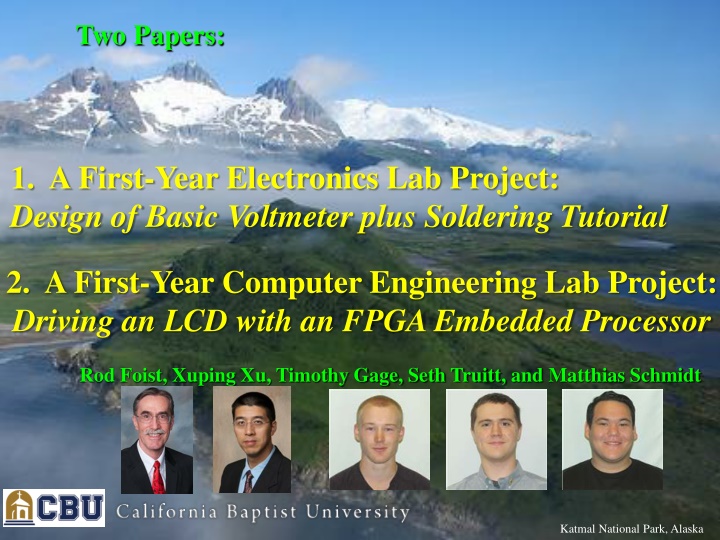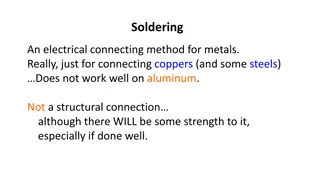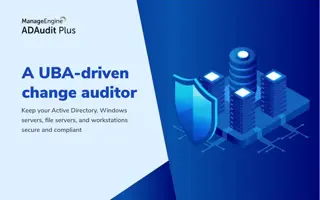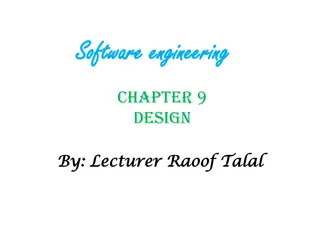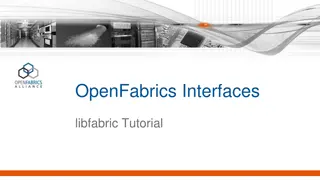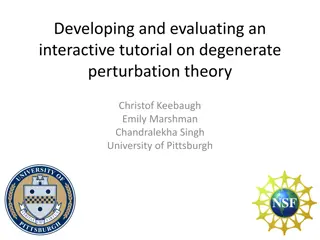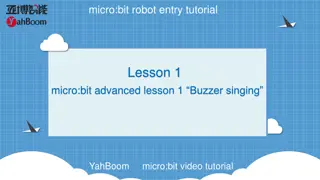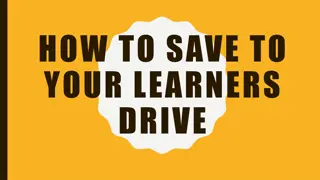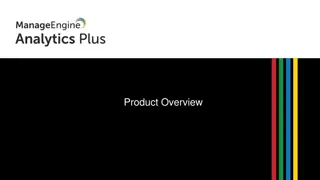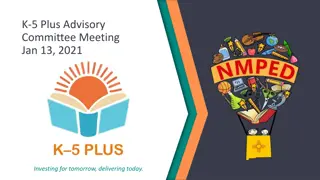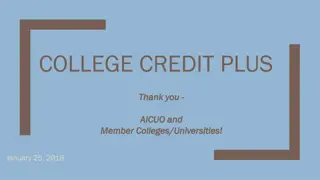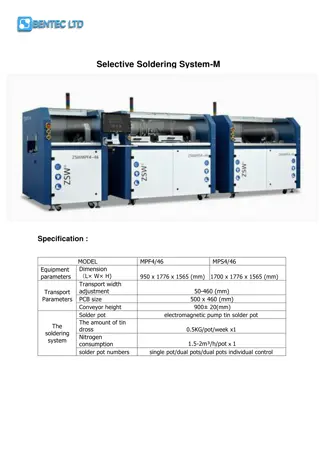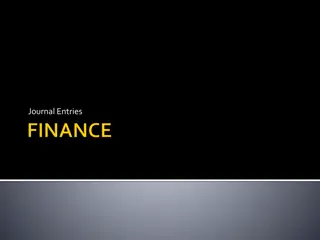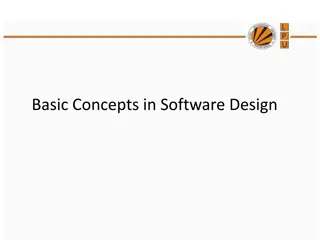Design of Basic Voltmeter plus Soldering Tutorial
Recent NSF research aims to improve Electrical and Computer Engineering curriculum using strategic lab projects in a spiral model. External collaborators tested new projects in existing courses to enhance student learning and prepare graduates for new challenges. The spiral model involves integrating lab projects across all four years to provide a cohesive learning framework.
Download Presentation

Please find below an Image/Link to download the presentation.
The content on the website is provided AS IS for your information and personal use only. It may not be sold, licensed, or shared on other websites without obtaining consent from the author.If you encounter any issues during the download, it is possible that the publisher has removed the file from their server.
You are allowed to download the files provided on this website for personal or commercial use, subject to the condition that they are used lawfully. All files are the property of their respective owners.
The content on the website is provided AS IS for your information and personal use only. It may not be sold, licensed, or shared on other websites without obtaining consent from the author.
E N D
Presentation Transcript
Two Papers: 1. A First-Year Electronics Lab Project: Design of Basic Voltmeter plus Soldering Tutorial 2. A First-Year Computer Engineering Lab Project: Driving an LCD with an FPGA Embedded Processor Rod Foist, Xuping Xu, Timothy Gage, Seth Truitt, and Matthias Schmidt Katmal National Park, Alaska
Outline Recent NSF Educational Research Using Labs Strategically Adapting the Spiral curriculum model External Collaborators with the PI Testing Labs Preliminary Results Inspired to Create Labs for the Spiral Model A Voltmeter + LCD Laboratory Project An FPGA + LCD Lab Project Code + Instructions Available Online Conclusions + Q&A 2 FYEE 2018, Dr. Rod Foist
Recent National Science Foundation (NSF) research is aimed at improving the Electrical and Computer Engineering (ECE) curriculum across all four years Principal Investigator Dr. Pong Chu (Cleveland State University) Goal: Enhance student learning and prepare graduates to meet new challenges Method: Make strategic use of lab projects within a spiral model External Collaborators: We tested new lab projects in existing courses 3 FYEE 2018, Dr. Rod Foist
The spiral model is based on an earlier 5-year study of engineering education* The study found a deficiency in the curricula: subjects are taught in isolation, without proper context, and do not adequately prepare students to integrate that knowledge. In addition, labs were not used effectively. Dominant curricular model: building blocks or linear components * Educating Engineers: Designing for the Future of the Field, by Sheri D. Sheppard et al., Carnegie Foundation, 2009 4 FYEE 2018, Dr. Rod Foist
Spiral model ... (continued) That study recommended a spiral model and effective use of labs (as design projects): the ideal learning trajectory is a spiral, with all components revisited at increasing levels of sophistication and interconnection. Learning in one area supports learning in another. 5 FYEE 2018, Dr. Rod Foist
Chus research applies/combines the spiral model + effective use of labs + 3 component themes He uses the spiral model by introducing certain lab component themes (in the freshman year) and lays out a plan to revisit them with increased sophistication and interconnection in the following years. Labs are used as a cohesive framework that connects and integrates individual courses. 3 themes used video (and image), sound, and touch sensors. 6 FYEE 2018, Dr. Rod Foist
We were external collaborators for Chutrying out some themed labs in a few existing courses for 2 years a 2nd year digital logic design course a 3rd year microcontroller course a senior course in advanced digital design our IEEE student club. A theme example: students are exposed to lab projects using visual feedback (LEDs and LCDs) in all four years but with more complexity introduced in each year. 7 FYEE 2018, Dr. Rod Foist
Preliminary resultsstudent survey: selected questions 1) The lab work I do for this course is relevant to my learning, 3) The labs for this course show me how to problem-solve in ECE, 4) The labs in this course make the content more understandable, 6) Doing the labs shows me real life applications of the information. Possible responses (with numerical values) were: Strongly Agree (5), Agree (4), Undecided (3), Disagree (2), Strongly Disagree (1). Table 1 summarizes the data. 8 FYEE 2018, Dr. Rod Foist
Inspired to create 2 user-friendly labs for the spiral model image theme A First-Year Computer Engineering Lab Project: Driving an LCD with an FPGA Embedded Processor A First-Year Electronics Lab Project: Design of Basic Voltmeter plus Soldering Tutorial Both projects use a liquid crystal display (LCD) an important component that can be re-visited in following years with more sophistication and interconnection. More-detailed instructions + project code are available online, per the papers: https://bitbucket.org/CBUCoEFYEE2018 9 FYEE 2018, Dr. Rod Foist
Conclusions + Q&A Dr. Chu s NSF research: 1. Employs the recommended spiral curriculum model from an earlier Carnegie scholars 5-year study 2. Makes strategic use of laboratory projects as a cohesive framework for individual courses 3. Resulted in a 2nd edition of his popular ECE book with spiral model lab projects included 4. Was partly tested by us and showed favorable student results at CBU Our work inspired us to: 1. Create 2 spiral themed projects with preliminary favorable student results *** The contribution of these papers: provide a fully-working, easy-to-use, first-year lab project within the video/image theme of the spiral model approach to improving the ECE curriculum. 10 FYEE 2018, Dr. Rod Foist
